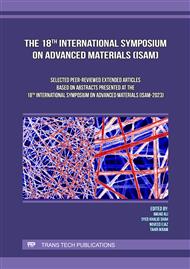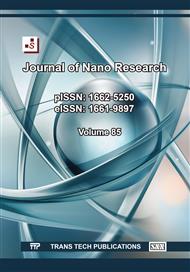p.1
p.11
p.21
p.37
p.43
p.53
p.63
Phase-Field Approach to Formation of Aluminum Oxyhydroxide Nanofibrils on a Liquid Aluminum Alloy Surface in Water-Containing Atmospheres
Abstract:
Formation of peculiar nanofibril structures on the surface of liquid aluminum alloys as a result of chemical reaction of aluminum with water vapors was well studied experimentally for various alloy components starting from mercury. However, the mechanism of nanofibril formation remains unclear to date, and the lack of an appropriate theoretical model does not allow evaluation of the structure parameters depending on the process conditions. We assume that the interface layer between the liquid metal phase and the atmosphere, containing the water vapor, develops certain inhomogeneities respect to the content of hydroxyl groups. That provides areas of suppressed and enhanced diffusion of the aluminum from the liquid phase toward the atmosphere contact. Phase-field modeling, taking into account their elastic interaction, demonstrates formation of the array of nano-islands, enriched with hydroxyl groups, which can be precursors for formation and growth of nanofibrils with elements of pre-boehmite structure.
Info:
Periodical:
Pages:
37-42
Citation:
Online since:
November 2024
Authors:
Price:
Сopyright:
© 2024 Trans Tech Publications Ltd. All Rights Reserved
Share:
Citation:



